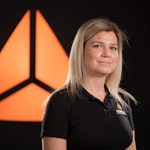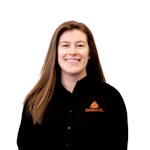Table of contents
Browse categories
Browse authors
 AB
ABAlberto Boffi
 AL
ALAlessia Longo
 AH
AHAl Hoge
 AB
ABAljaž Blažun
 BJ
BJBernard Jerman
 BČ
BČBojan Čontala
 CF
CFCarsten Frederiksen
 CS
CSCarsten Stjernfelt
 DC
DCDaniel Colmenares
 DF
DFDino Florjančič
 EB
EBEmanuele Burgognoni
 EK
EKEva Kalšek
 FB
FBFranck Beranger
 GR
GRGabriele Ribichini
Glacier Chen
 GS
GSGrant Maloy Smith
 HB
HBHelmut Behmüller
 IB
IBIza Burnik
 JO
JOJaka Ogorevc
 JR
JRJake Rosenthal
 JS
JSJernej Sirk
 JM
JMJohn Miller
 KM
KMKarla Yera Morales
 KD
KDKayla Day
 KS
KSKonrad Schweiger
Leslie Wang
 LS
LSLoïc Siret
 LJ
LJLuka Jerman
 MB
MBMarco Behmer
 MR
MRMarco Ribichini
 ML
MLMatic Lebar
 MS
MSMatjaž Strniša
 ME
MEMatthew Engquist
 ME
MEMichael Elmerick
 NP
NPNicolas Phan
 OM
OMOwen Maginity
 PF
PFPatrick Fu
 PR
PRPrimož Rome
 RM
RMRok Mesar
 RS
RSRupert Schwarz
 SA
SASamuele Ardizio
 SK
SKSimon Kodrič
 SG
SGSøren Linnet Gjelstrup
 TH
THThorsten Hartleb
 TV
TVTirin Varghese
 UK
UKUrban Kuhar
Valentino Pagliara
 VS
VSVid Selič
 WK
WKWill Kooiker
Machine Condition Monitoring on Chaban-Delmas Bridge

To investigate the sources and to increase the overall quality of predictive maintenance, Clemessy decided to install sound and vibration monitoring sensors to monitor the kinematic chain – the machinery – as well as the main pulleys on each side of the bridge.
The challenge was to define the best DAQ architecture and monitoring technology for this instrumentation with long cable lengths and to interconnect the Dewesoft data acquisition solution to the customer database.

“Provide a crossing over the river Garonne for cars, pedestrians and bicycles, as well as, at a later date, a tram line” and “allow the passage of boats and, in particular, very large ships” – in 2003, these were the project requirements for a new bridge to cross the river in the city center of Bordeaux, France.
The result of the project is the Pont Jacques Chaban-Delmas, the longest vertical-lift bridge in Europe – its main span is 110 m (361 ft). The construction took place from 2009 to 2012 and the bridge was inaugurated in March 2013.
Bordeaux in southwestern France, with almost 1,2 million inhabitants in the metropolitan area and hub of the famed wine-growing region, is a port city on the Garonne River. The Garonne has a length of 602 kilometres (374 miles) and flows into the Atlantic Ocean.
The bridge has been named in honour of Jacques Chaban-Delmas (1915-2000), a former prime minister of France and mayor of Bordeaux from 1947 to 1995. During World War II, his nom de guerre as a general in the underground resistance was Chaban, and after the war, he formally changed his last name to Chaban-Delmas.
Today, this fifth bridge over the Garonne within the city connects the eastern and the western parts of Bordeaux, the left bank city center near its wharves with the right bank of the city – the districts of Bastide and Bacalan. That is why the bridge also has been nicknamed “Le Pont Ba-Ba”.
Vertical-lift bridges are an uncommon solution to spanning a river used by large or tall ships, but such passage would allow the city to profit from the development of the cruise business. The structure, with a height identical to the Aquitaine Bridge downstream, had to be able to rise within 12 minutes maximum.
The architecture firm of the bridge is the SARL Architecture et Ouvrages d'art. The design of the work and the project management within the design-realization consortium led by the GTM company are carried out by Egis JMI, the architects Thomas Lavigne and Christophe Cheron, Hardesty & Hannover, and the design engineer Michel Virlogeux.
The bridge is 575m long (1421 feet): 433m of which is the main deck and 117m (387 feet) is the central lift span. The central section of the bridge remains in one piece but lifts vertically up by 58m (190 feet) to let tall ships pass underneath. The height of the four independent towers, and the pylons is 77 m (262 ft), and the distance between them is 110 meters (361 feet).
The weight of the lifted part of the bridge is around 2,600 tons. Forty ropes 69 meters in length each connect to this center bridge segment, via deflection pulleys at the top of the four pylons using counterweights.
The width of the bridge varies depending on the different sections; from 32m (115 feet) at the abutments to 45 meters (148 feet) for the lift span. The usable width is 27 meters with 15 meters used by public transport in its own site, pedestrians and two-wheelers and 12 meters for light vehicles and trucks. Bike and pedestrian paths are separated from motor vehicle traffic. Thus, this gentle circulation takes place outside the pylons of the bridge.
The bridge is configured for up to 43,000 vehicles a day. The bridge rises about sixty times a year, stopping traffic for about an hour in order to let larger vessels pass through. The bridge takes just 11 minutes to fully lift or lower into place.
Predictive maintenance - permanent monitoring
Operation and maintenance of the structure is the responsibility of the company Eiffage Energie Systemes - Clemessy, a branch of one of the top five biggest construction and concession companies in Europe, Eiffage. Clemessy is specialized in the engineering and implementation of industrial technical installations.
The Chaban-Delmas bridge is a structure capable of lifting a lifting span of 2,750 tons to a height of 53 meters in 11 minutes allowing the passage of yachts, ferries, or sailboats which will dock at the port of Bordeaux.
The lifting mechanism works on the principle of a giant elevator and requires the participation of a team of ten staff members. From a control tower, two operators manage the maneuver while the rest of the team is spread over the various strategic points in the foothills of the bridge. In addition to this, the team manages the maintenance of the vital machinery:
motors,
shafts,
huge cables, and
pulleys.
After months of operation and many manoeuvres, impact noises and clicks were detected by the maintenance team. To investigate the source of the noise and to increase the overall quality in predictive maintenance, Clemessy decided to install sound and vibration sensors to monitor the kinematic chain – the machinery – as well as the main pulleys on each side of the bridge.
This investment in the data acquisition instrumentation of the mechanical operation of the bridge has been the responsibility of the owner, the city of Bordeaux, while Clemessy was in charge of the project. The bridge is mainly instrumented with IEPE sensors – accelerometers and microphones, while current sensors and tachometers are only used in the machinery instrumentation.
Measurement setup
Things to look out for can be vibration and inexplicable noise, such as knocks, which are phenomena below 10 kHz bandwidth, so the maximum required sample rate was 20 kHz which fitted perfectly with the maximum sample rate of KRYPTON, a rugged and distributed EtherCAT data acquisition system for field measurements in any environment.
KRYPTON DAQ systems have an IP67 degree of protection and can operate in the extreme temperature range from -40 to +85°C.
The whole instrumentation is 82 analog input channels separated in two sides of the bridge - 41 channels for each side with two pulleys:
1 x KRYPTON-8xACC data acquisition system
6 x Accelerometers with 5kHz bandwidth (SR=10kS/s)
2 x Microphones with 10kHz bandwidth (SR=20kS/s)
Machine condition monitoring system for each side of the two sides of the bridge:
3 x KRYPTON-8xACC data acquisition systems
1 x KRYPTON-3xSTG data acquisition systems
1 x KRYPTON-1xCNT data acquisition system
DewesoftX DAQ software with OPT-NET + OPC UA server + DSA upgrade
This application required the math processing tools of DewesoftX data acquisition software to calculate real-time statistical parameters on each vibration sensor. The point of interest for the investigation was not the time channels but from each input sensor, the customer required to calculate statistical indicators to compare with alarm levels. An alarm counter was also implemented for this project.
Shortlist of indicators
| Sensor type | INDICATOR | BWDTH | Averaging Time | Unit | Type |
|---|---|---|---|---|---|
| MachineryAccelerometers | Global Level Vel. (Low Frequency)(mm/s RMS) | [1-1000 Hz] | 10 sec | mm/s | RMS |
| Global Level Vel.(mm/s RMS) | [3-1000 Hz] | 3 sec | mm/s | RMS | |
| Global Level Acc.(g RMS) | [200-2000 Hz] | 1 sec | g | RMS | |
| Global Level Acc.(g RMS) | [2000-8000 Hz] | 1 sec | g | RMS | |
| Global Level Acc.(g cc) | [10-8000 Hz] | 500ms | g | Peak-to-peak | |
| Shock counter from Acc. GLApkpk | |||||
| Alarms with different level for each indicator | |||||
| Electric MotorCurrent / Velocity | Current (A RMS) | 0,5 | A | RMS | |
| Velocity | rpm | RMS | |||
| Main PulleysMicrophones / Accelerometers | Global Level Microphone (dB cc) | [10-8000 Hz] | dB | Peak to peak | |
| Global Level Acc. (g cc) | [10-8000 Hz] | g | Peak to peak | ||
| Shock counter from GLM | |||||
| Max shock Level |
The challenge was to define the best DAQ architecture for this instrumentation as some sensors are located on the top of pylons for the pulleys monitoring. Each side has two pylons, and these pylons are 110 meters high and no source of power is available on the top.
KRYPTON DAQ modules, based on EtherCAT protocol technology allow having a cable that can run up to 100 meters from module to module connecting amplifiers together. A single cable is used to transmit data, power, and synchronization between DAQ modules.
The rugged DAQ modules and EtherCAT were the two main reasons to select KRYPTON. These were the only solutions to place the data acquisition system on the top of each Pylons without the big investment.
The source measure unit (SMU) is capable of both sourcing and measuring at the same time. It can precisely force voltage or current and simultaneously measure precise voltage and/or current.
Connect DAQ system with existing database - OPC UA
Another challenge - and not the least - was to interconnect the Dewesoft data acquisition solution to the customer database over OPC UA to exploit the data in an Internet of Things (IoT) solution. The key to this application was the OPC UA server plugin. OPC Unified Architecture (OPC UA) is a machine to a machine communication protocol for industrial automation developed by the OPC Foundation. This standard is frequently used in Industry 4.0 for communication and data sharing between different devices.
Dewesoft X3 data acquisition software offers two OPC UA options that can be included:
OPC UA client: the client that can be connected and fetch data from any OPC UA server.
OPC UA server: the server can serve Dewesoft X measurement data to one or more OPC UA clients.
During bridge lifts, the condition-based maintenance team members are not situated in front of Dewesoft but use a specific local web interface with only statistics and reports about the manoeuvre. The CLEMESSY database collects information from the Dewesoft OPC UA server such as alarm levels, alarm numbers, shock counting, statistic levels for accelerometers/microphones, and DAQ status.
Clemessy database solution is called Smart Forest. More than a single database, Smart Forest is a global solution, including:
A "Big Data" software platform
A multi-channel, multi-source interface for data collection
An Artificial Intelligence engine
A modular and user-friendly HMI
Conclusion
Dewesoft was capable of offering a complete hardware and software solution for the data acquisition and monitoring instrumentation of the whole bridge and as a proven partner of Clemessy France, our solution was preferred.
To optimize project deadlines the Dewesoft setup was initiated before the official delivery. When the hardware was actually delivered, the architecture was tested and the setup was evaluated and improved – first in the laboratory, then during the on-site installation.
The DewesoftX DAQ software is intuitive and very easy to use, however, to set up properly 82 AI channels, add 800 math calculations, set up 800 alarms and create a nice display without errors, it does take some time.
The proactive support and good communication helped the project to fly on time and to prevent any surprises and issues related to the dispersed DAQ architecture with long cable lengths. The first maneuver of the bridge with the Dewesoft solution was a success. Dewesoft setup was improved and a sequence was added to prevent maintenance Team actions on the instrumentation.
Dewesoft offers a range of DAQ solutions, combining innovative Hardware and Software DAQ technologies such as the OPC UA server plugin, that can fit the instrumentation needs of large engineering structures like bridges, tunnels, buildings, etc.
To have only one software to acquire analog data, do the online calculations, do alarm control systems, and transmit data using the latest IoT protocol is a major customer benefit and was a reason for success in this case. And the output: Reliable data presented in a smart user interface.